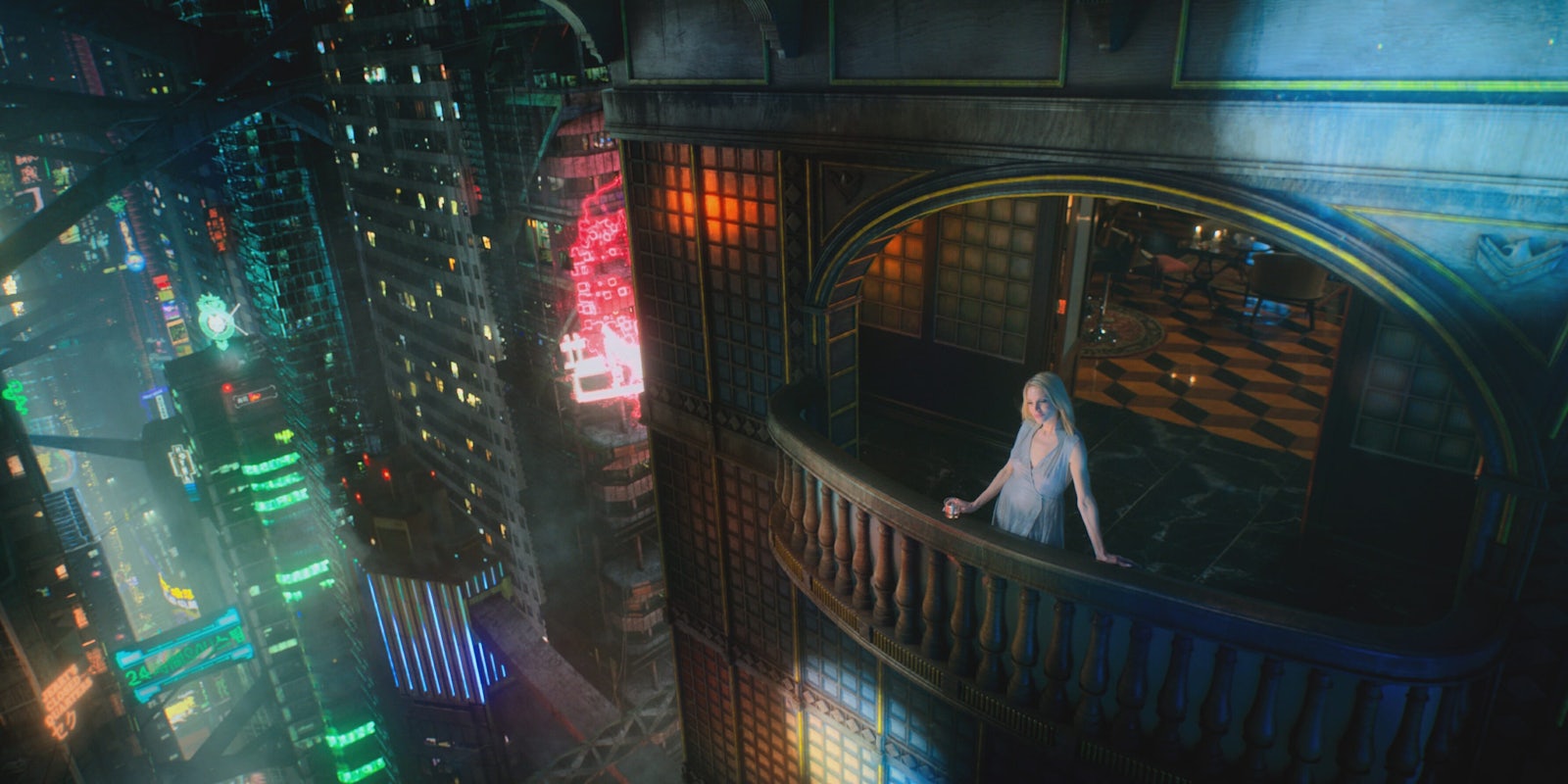Why is it always raining in Blade Runner?
The sequel decided it was evidence of climate change, but the original reason was less scientific. Ridley Scott had to shoot a dystopian cityscape in a studio backlot, and the watery darkness helped to disguise the sets. Since then, the cyberpunk future has been habitually wet. Gloomy weather is now mandatory to the genre.
Cyberpunk grew out of speculative sci-fi in the 1960s and ’70s, and its genre-defining works are all more than 20 years old: Blade Runner (1982), Neuromancer (1984), and Ghost in the Shell (1995). They set out a vision that barely evolved since the ’80s, forever trapped in a timewarp of hardboiled detectives, sexy hologram girls, and corporate greed. Netflix’s Altered Carbon is the latest addition, with Duncan Jones’s movie Mute arriving later this month—complete with the obligatory robot strippers, of course.
In 2018, mainstream cyberpunk feels like a failure of imagination. The dystopian future is already here, complete with Bitcoin, amateur biohacking, sex droids, and hologram concerts performed by dead musicians. Cities are competing to host Amazon as a feudal overlord. Jogging apps are revealing the locations of secret military bases. The rainy studio backlot is no longer necessary.
This photo of Toronto is unreal. Looks like Blade Runner. pic.twitter.com/nD5KzD3xut
— Dennis Detwiller (@drgonzo123) January 27, 2018
Things like Blade Runner 2049 and Altered Carbon rely on a weird kind of retro-futuristic nostalgia, using a familiar aesthetic to disguise a lack of new ideas. In Altered Carbon’s case, it’s especially disappointing. With gorgeous costumes and production design, it meticulously copies Blade Runner with little consideration for how society might change over 300 years.
Unlike the evolution from Star Trek to Firefly to Battlestar Galactica in the spacefaring sci-fi genre, cyberpunk failed to move on. In terms of gender roles, it’s probably regressed. Altered Carbon, Ghost in the Shell (2017) and Blade Runner 2049 all use their dystopian settings to exploit female bodies, tormenting and displaying a series of doll-like women under the guise of social commentary. Altered Carbon’s body-swapping technology is a typical cyberpunk allegory for the evils of capitalism (because rich people can buy immortality) and also a handy excuse to murder naked women onscreen (because their bodies are replaceable commodities.)
the year is 3403 AD, crime is legal and cop's are illegal, only one man is willing to break the law to make the law legal again: Crimecop
— thomas violence (@thomas_violence) June 2, 2014
Without that rainy cyberpunk aesthetic, you quickly realize that better material lies elsewhere: in films like Inception and Snowpiercer, in TV shows like Silicon Valley and Skam, and in the chaotic reality of viral fame. It’s the opposite effect of the visual worldbuilding in Star Wars, which hides deeper political meanings beneath a superficial layer of laser swords and fantasy costumes. Cyberpunk just thrives on looking cool, to the point where recent examples barely do anything else.
